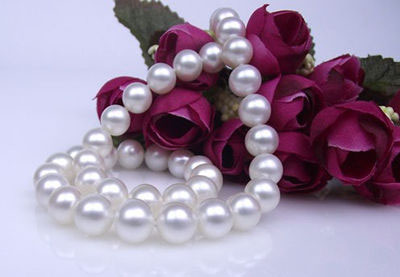In recent years, more and more colored pearls of various colors have appeared on the market. With the development of technology, pearls can be dyed in any color using existing technology. In recent years, dyeing technology has been continuously improved, dyed pearls have appeared more frequently, and the color has become more abundant and beautiful. How to distinguish natural pearls and dyed pearls has become a concern of many consumers. Don't worry, let the Chinese Jewelry Merchants Network Xiaobian come to you to identify natural pearls and dyed pearls. Identification method of natural pearls and dyed pearls 1, see the stain The density of the pearl bead layer may not be exactly the same, and the pigment of the dyed pearl will precipitate at a relatively low density, and a stain will be formed. The stain has a clear dividing line and may leave significant pigmentation in some areas of the tendon. Some dyed beads may not be able to see the spots under natural light. Under strong light, the spots are unremarkable. For example, if you get a strong light source such as an incandescent lamp, adjust it to the optimal distance according to your own conditions. 2, internal structure Under the reflected illumination, the surface of the dyed pearl is often seen to have an interference halo under the thin layer of the nacre. This phenomenon may be a film interference caused by the penetration of the dye into the inside of the nacre. 3, see the color The color of the dyed pearls is dignified and sluggish. There are color enrichment in the areas where the holes and the holes are drilled. The characteristics of the color distribution along the cracks are easily observed near the holes, and the beaded lines are often dyed with the color of the dye. Traces of the dye are visible in the pores of the beads, especially at the junction between the mother-of-pearl layer and the bead core. Such as: black pearls that are very popular with consumers, the color of natural black pearls is not pure black, often with color. Slowly turn the black pearls. When you look closely, you can see the ever-changing pearls of the rainbow. The strong metallic luster will change with the rotation of the pearls, full of unique charm. The dyed black pearls, the color is rigid, the color is dark, and there is no color. 4, chemical testing The pearls were wiped on cotton swabs with a dilute cerium nitrate at a concentration of 2%. The silver nitrate-dyed pearls quickly dyed the cotton swabs, sometimes even with an alcohol swab. But this method has some damage to the pearl, please be careful! 5, instrument testing If you want to buy expensive pearls, consider the identification of the instrument by the jewelry appraisal agency: Ultraviolet Fluorescence - Pearls often have different red fluorescence under long-wave UV radiation; however, dyed pearls are mostly inert or have dark green fluorescence. X-ray radiography - X-rays of the film, can show the dyed pearls treated with silver salt, a thin white streak between the pearls of the dyed beads and the bead core. Infrared photography - shoot the pearls with infrared film. The image of the black pearl is greenish blue, but the image of the dyed pearl treated with silver salt appears yellow. Of course, the technique of pearl dyeing will certainly not stop, and the method of identification must also follow the changing trend. It will not be limited to the above identification methods. If there is better in the future, it will be supplemented. The above is the information about the identification of pearls organized by Zu Gongju. The information comes from the Internet. If you have any questions, please forgive me. If you need to know the knowledge and consultation of Caibao Diamond, please pay attention to the official website of Zocai, Zocai. We look forward to seeing you! China Optical Domes,Optical Quartz Dome manufacturer, choose the high quality Optical Glass Domes,Optical Quality Glass Domes, etc.Founded in 2014, Bena was co-founded by several experienced engineers who have more than 10 years of optical design, process, production and test. We provide customization service for high precision (rms = 1/100λ, λ=632.8nm), large diameter plane mirror (>500mm) and aspherical lens, as well as professional spherical lens (such as optical domes with diameter 280mm), involving different materials including K9, Silicon, Sapphire, SiC, glass ceramics, fused silica, and other various optical glasses, and we can also deal with the nickel-phosphorus alloy surface on different substrates. Optical Domes,Optical Quartz Dome,Optical Glass Domes,Optical Quality Glass Domes Changchun Bena Optical Products Co., Ltd , https://www.benaoptic.com